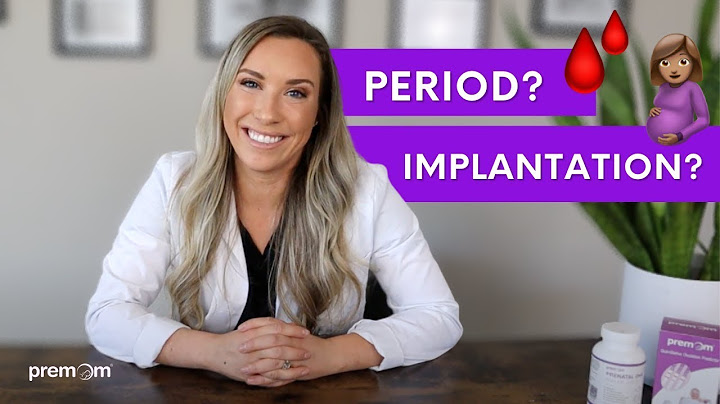 Show
If you’re new to banking, you may be curious about which account is right for you: checking or savings? Should you open a checking account to get access to a debit card? Or, should you open a savings account to take advantage of interest? Do you really need both? Learn more about the differences between checking and savings, and find out how both accounts can benefit you. Checking Accounts: Money for Everyday NeedsThe main difference between checking and savings accounts is that checking accounts are primarily for accessing your money for daily use while savings accounts are primarily for saving money. Checking accounts are considered “transactional,” meaning that they allow you to access your money when and where you need it. While both allow you to access your money, you may consider it easier to do so with checking accounts. Since these accounts are designed to give you easy access to your cash, they often come with debit cards, checks, and even offer digital payment options like Apple Pay. In contrast, savings accounts have a limit on the number of withdrawals you can make each month. While checking accounts are convenient for daily cash needs, it’s important to remember that they may be age restricted. Most banks won’t allow people under the age of 18 to open a checking account without a parent or legal guardian as a co-owner of the account. Before opening a checking account, make sure that its terms fit your financial needs and your lifestyle. Learn more about how to open a checking account. Compare checking account options. Savings Accounts: Money for Long-Term GoalsWhen it comes to setting aside money for a long-term need or goal, you should consider a savings account. Savings accounts are designed to hold money over a long period of time to help you save for larger goals (rather than everyday purchases). As your money stays in the account, it will accrue interest and grow over time. This means that you will need to visit your bank, set up a transfer online1, or make an ATM withdrawal to access your money. Keeping some of your money in a savings account is a great way to set it aside for emergencies or large purchases – its limited access will keep you from spending it on day-to-day necessities. There are also dedicated savings accounts for kids, though a parent or guardian is usually required as a joint owner. Learn more about how savings accounts work. Compare types of savings accounts. Checking vs. Savings Accounts – Which is Best for Me?If you’re trying to decide between savings or checking, it’s best to consider what you need from your bank account. Ideally, you should open both a checking and a savings account to enjoy the benefits of each. Santander Bank offers a range of checking and savings options so you can choose the accounts that are right for you. Learn more about our personal banking products or visit your local branch to speak with one of our banking associates. New to bank accounts, or have additional questions? Visit our checking and saving resources to get answers to frequently asked checking or savings questions. 1We limit withdrawals and transfers out of your savings and money market savings accounts. You can withdraw or transfer funds from a savings or money market savings account a total of six (6) times per Service Fee Period (such as by automatic or pre-authorized transfers using telephone, online banking, mobile banking, overdraft protection, payments to third parties, wire transfers, checks, and drafts). If you repeatedly exceed these limits, we may close or convert your account to a checking account, which may be a non-interest-bearing checking account. Checking account vs. savings accountThe main difference between a checking and a savings account is that checking accounts are generally used for everyday spending while savings accounts are primarily used for saving and growing your money. What are checking and savings accounts used for?Checking accounts are better for regular transactions such as purchases, bill payments and ATM withdrawals. They typically earn less interest — or none. Savings accounts are better for storing money. Your funds typically earn more interest. You might have a monthly limit on how often you can withdraw money without paying a fee.
 SoFi Checking and Savings   LendingClub High-Yield Savings   Citizens Online Savings Account  Min. balance for APY $5,000  CIT Bank Savings Connect  How to choose a checking accountLook for an account that either doesn’t charge a maintenance fee or has an easy way to waive it. Some top accounts also earn interest, though rates may come with balance limits and spending requirements. Otherwise, checking account rates are generally lower than what top savings accounts offer. Along with no monthly fees, the best checking accounts tend to have free access to nationwide ATM networks. Some even have sign-up bonuses. Checking accounts also offer debit cards as a standard feature. This makes it easy to make everyday purchases. How to choose a savings accountThe best savings accounts have strong interest rates, no monthly fees and offer easy online bank transfers. Look for accounts with rates that are around 2% annual percentage yield or higher and have no monthly service charges. You’ll also want to look out for other fees. For example, some accounts charge for making some types of withdrawals, such as online transfers, too frequently. There used to be federally enforced limits on some of these “convenient” withdrawals, capping them at six per month. The FDIC announced in April 2020 that it would no longer require financial institutions to enforce the withdrawal limit. However, you’ll want to check with the financial institution to confirm if it is still enforcing a limit. If so, you could be charged a fee — usually around $5 to $10 — for each excess withdrawal. (Read more about savings withdrawal limits.) The value of high APYsWhen you put your money in an account that earns above-average interest, you can grow your balance faster over time, without extra effort. This may not be a large factor for checking accounts — though some do earn interest — because they are designed for spending and not necessarily for growing large balances. But savings accounts are meant to grow, so it is important to maximize the annual percentage yield. The average savings account APY is just 0.17%, but some banks and credit unions offer much more than the average. The best savings accounts have rates around 2% APY or higher. You can see the difference a higher APY makes. Say you deposit $5,000 in an account that earns 0.05% APY. After a year, that money earns less than $3. But if you deposit that cash in an account that earns 2% APY, you would have about $101 more after the same time period. A high APY may not make you rich, but it does mean more money for no extra effort. 🤓Nerdy Tip Interest rates are on the rise for savings accounts thanks to the Federal Reserve’s actions this year. See what the best high-yield savings accounts are offering right now. Alternatives to regular savings accountsA regular savings account isn’t your only option for earning more interest on your money. You could also look into a money market account. These accounts pay interest, just like savings accounts, but they also often come with debit cards or the ability to write checks. The catch is that they also tend to have higher minimum balance requirements. If you don’t expect to withdraw your money for several months, or have a large amount to deposit — say, $10,000 or more — you could consider a certificate of deposit. CDs usually offer better rates than regular savings accounts because they require you to leave your money deposited for a specified amount of time. They also often have higher minimum deposits. Premium checking accountsSome banks offer premium checking accounts in addition to basic checking accounts for customers with enough assets to qualify for one. These accounts come with a variety of perks, ranging from ATM reimbursements to discounted mortgage rates. Want to learn more? Here are answers to frequently asked questions about checking and savings accounts. Are interest rates fixed on savings and checking accounts?If you are looking for a fixed rate, consider opening a CD instead. And if you would like a fixed-rate account that gives you access to your money before the end of the term, a no-penalty CD is an option. Could I lose my money in a checking or savings account if the bank fails?Deposit accounts at most banks and credit unions are federally insured up to $250,000 per depositor. If the account is with a bank, the funds would be insured by the Federal Deposit Insurance Corp., while credit unions are federally insured through the National Credit Union Administration. If a bank or credit union were to go out of business, you would not lose your deposit, up to the insured amount. » Want to know more about how your funds are protected? Read how FDIC and NCUA insurance programs work Should I have my checking and savings accounts at the same bank?There are some benefits to having both accounts at the same bank or credit union. Doing so makes it easy to manage your money and make near-instant transfers between accounts. Some banks also waive monthly fees if you link checking and savings, though they may also require a minimum balance in the combined accounts. But, pairing your accounts has some downsides. You may not find both the best checking and the best savings accounts at the same institution. For example, banks with some of the highest savings rates don’t always offer checking accounts. If you're ready to maximize savings but don't want to part with an existing account just yet, consider opening a separate high-yield savings account at a different bank. See our list of banks that are offering high savings rates this month.
Is it better to get a checking or savings account?Checking accounts are better for regular transactions such as purchases, bill payments and ATM withdrawals. They typically earn less interest — or none. Savings accounts are better for storing money. Your funds typically earn more interest.
Is it worth having a savings account with Chase?The Chase Savings account is worth your consideration if you prefer Chase's major branch and ATM presence in the U.S. -- you're getting convenience. However, there are many other savings accounts available on the market.
What is the difference between checking account and savings account?The main difference between checking and savings accounts is that checking accounts are primarily for accessing your money for daily use while savings accounts are primarily for saving money. Checking accounts are considered “transactional,” meaning that they allow you to access your money when and where you need it.
Is a debit card a checking or savings account?Is a debit card checking or savings? Debit cards are associated with checking accounts. Checking accounts also typically have checks.
|

Related Posts
Advertising
LATEST NEWS
Advertising
Populer
Advertising
About

Copyright © 2024 ihoctot Inc.

















